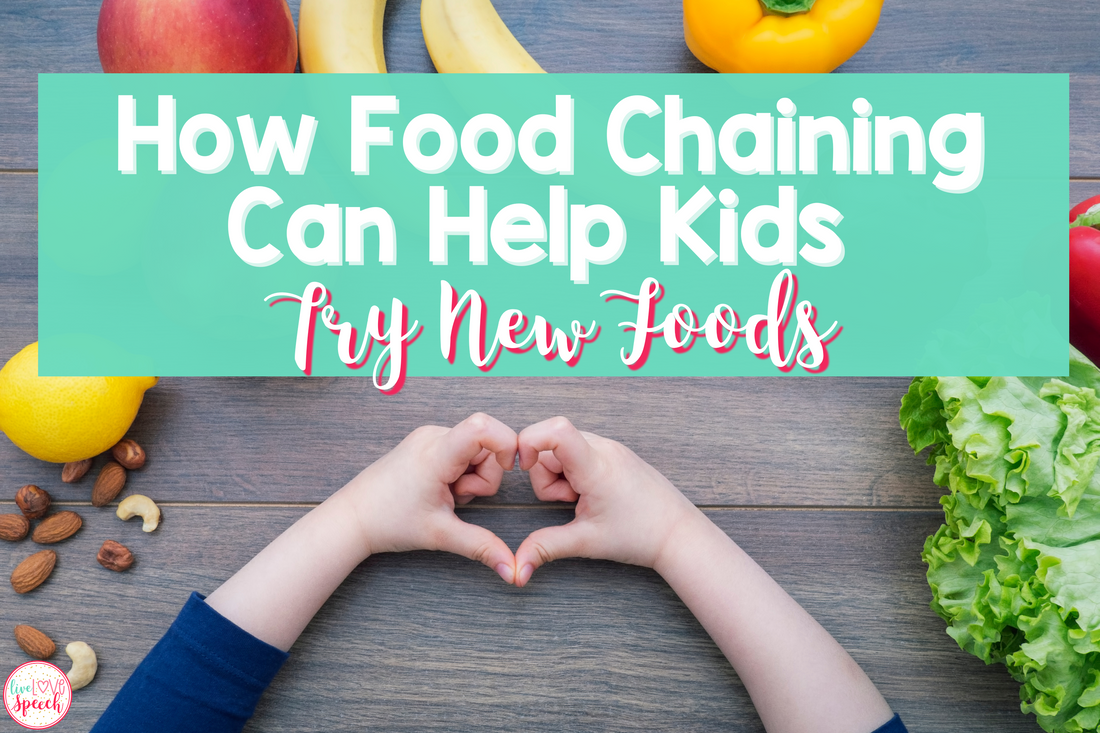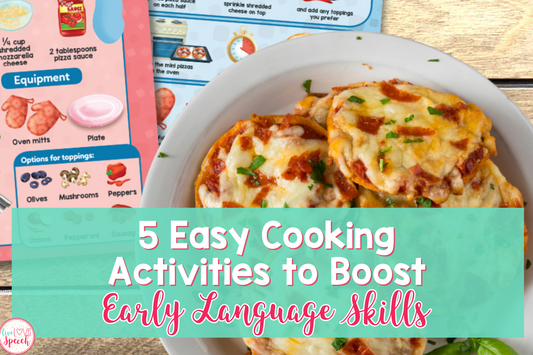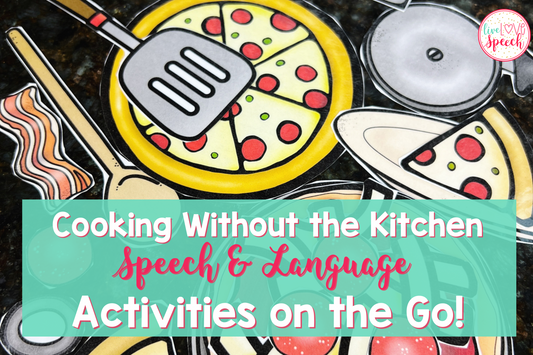 If you’ve ever felt stuck trying to help a child eat more than just three favorite foods, you’re not alone. Whether you’re a parent, teacher, or SLP, picky eating can turn every mealtime into a battle with tears, tension, and very little progress. The frustration is real, especially when your go-to strategies just aren’t working anymore.
If you’ve ever felt stuck trying to help a child eat more than just three favorite foods, you’re not alone. Whether you’re a parent, teacher, or SLP, picky eating can turn every mealtime into a battle with tears, tension, and very little progress. The frustration is real, especially when your go-to strategies just aren’t working anymore.
But what if there was a way to gently guide kids toward trying new foods, without pressure, bribing, or forcing bites?
That’s where food chaining comes in.
This gentle, step-by-step method can help kids expand their diets without power struggles, pressure, or stress. It works by meeting kids where they are and building on what they already enjoy eating. And when it’s done intentionally, food chaining can create wins at mealtime and open the door to meaningful growth in communication.
What Is Food Chaining?
Food chaining is a gradual way to help kids feel more comfortable trying new foods. It’s not about pushing something totally unfamiliar onto their plate. Instead, it builds off what they already like and makes small, doable changes over time.
Here’s how it might look:
Let’s say your student loves plain spaghetti. You might start by offering it with a little butter. Once that’s going well, try adding a small spoonful of tomato sauce. After that, maybe you can introduce meat sauce.
Later, you might switch the pasta shape or try lasagna. Each step feels familiar enough that it doesn’t feel overwhelming.

Why Does Food Chaining Work So Well?
The beauty of food chaining is that it builds on trust and predictability. That’s especially important for sensory-sensitive or anxious eaters. Here’s why it works:
-
It gives kids small wins that build confidence
-
It avoids the "just one bite!" pressure and power struggles
-
It supports routine and structure, which many kids thrive on
-
It respects a child's boundaries while gently moving them forward
This isn’t just a therapy technique. Food chaining can easily become part of everyday routines. Parents can try it during meals and snacks. Teachers can use it during structured snack times or cooking groups. SLPs can pair it with visual supports, descriptive language, and even pretend play activities.
Real-Life Example: Berry Yogurt Parfait Chain
Here’s a quick example of what a food chain might look like using a common snack:
-
Greek yogurt
-
Greek yogurt with granola
-
Greek Yogurt with soft berries mixed in
-
Layered berry yogurt parfait with granola on top
You’re gradually shifting the food experience while keeping parts of it familiar. The base (yogurt) stays consistent at first, then new textures and flavors are introduced. This helps reduce anxiety and builds confidence with each small step.
Shop Visual Recipe Cards Here.
Bring in Language Goals, Too
Of course, because we’re all about functional communication, let’s talk about how food chaining also opens up space for language development.
During these mealtime routines or snack sessions, you can model and elicit:
-
Descriptive language: crunchy, salty, sticky, smooth
-
Requests and refusals: want, more, all done, help, no thanks
-
Expanded phrases: “I don’t like it,” “That one is too sticky,” “I want more toast.”
-
Asking and answering questions: "What does it taste like?" "Which one do you like best?"
Food chaining can be incredibly powerful for mixed groups and real-life carryover, especially when you use visuals, recipes, or role-play activities. The more natural and consistent the practice, the more confident kids become in eating and expressing themselves.
Start Simple, Stay Consistent
If you’re new to food chaining, don’t feel like you have to reinvent the wheel. Start with what your student already eats and build from there. Keep visuals nearby, offer choices, and celebrate each step forward, even if it’s just a lick, a touch, or a sniff.
This is exactly where visual supports can make all the difference. My Visual Recipe Cards are a favorite for SLPs, teachers, and parents because they combine step-by-step cooking visuals with language-building opportunities. They're perfect for integrating food chaining into your sessions without needing real ingredients every time.
You can also pair food chaining with adapted books or pretend cooking sets. If you're looking for something that's ready to go, my School-Themed Snacks & Stories Set is a great way to combine themed visual recipes, language goals, and literacy in one easy-to-use resource, perfect for group sessions or back-to-school routines.
If you're doing a "Snack & Story" session, pick a food from your chain to include in the activity. Keep the language simple, the tone playful, and the environment calm.
Real Progress Looks Like This
Trying new foods doesn’t have to be dramatic. Sometimes, real progress is a child dipping a pretzel in peanut butter for the first time or saying, "I don't want that" instead of melting down. Those are big wins.
Food chaining is all about making food feel safe, predictable, and eventually, enjoyable. And when kids feel safe, they can eat, communicate, and learn more freely.
Because mealtime shouldn’t be a battle. And trying new foods doesn’t have to feel scary.
Just take it one bite at a time.
For more ideas, tips, and resources, be sure to check out my other blog posts. Let's keep making learning enjoyable for both you and your child







